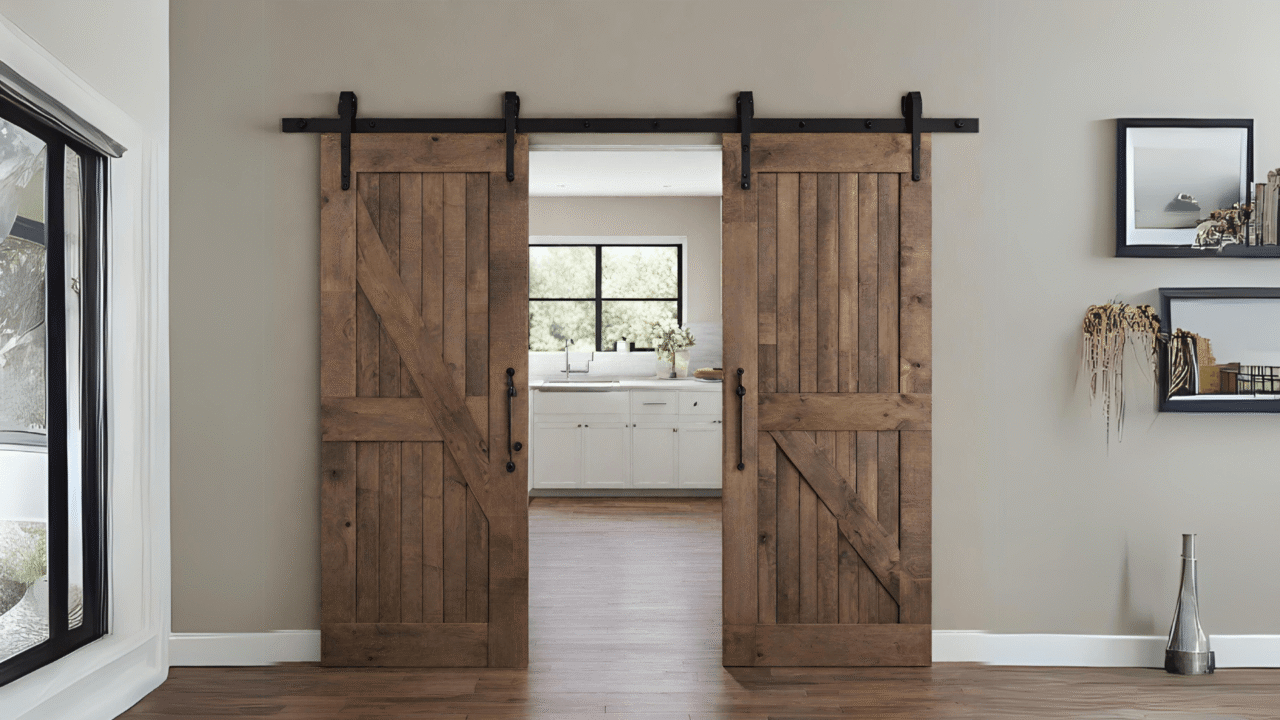Interior doors are more than just functional barriers between rooms—they’re design elements that can elevate the character and flow of your home. Whether you’re planning a renovation or building from scratch, choosing the right interior door involves balancing style, space, and practicality. This article explores various types of interior doors, materials, and finishes, as well as how to choose and style them to complement your overall design aesthetic.
Why Interior Doors Matter
Interior doors:
- Define transitions between spaces
- Enhance privacy and noise control
- Add architectural interest
- Influence natural light flow
- Contribute to the home’s overall style
By considering design early in your selection process, you can ensure consistency and cohesion throughout your space.
Types of Interior Doors
1. Panel Doors
- Traditional style with rectangular patterns
- Available in 1 to 6-panel options
- Works well in most architectural settings
2. Flush Doors
- Flat surface, minimalistic
- Ideal for modern and contemporary interiors
3. French Doors
- Glass-paneled double doors
- Allow light to pass through
- Best for living rooms, home offices, or between common areas
4. Pocket Doors
- Slide into a wall cavity
- Great for small spaces or tight clearances
5. Barn Doors
- Slide along an exterior wall track
- Rustic or modern depending on hardware and material
6. Bifold Doors
- Fold on hinges like an accordion
- Often used for closets or laundry rooms
7. Louvered Doors
- Feature horizontal slats
- Improve ventilation, ideal for pantries or closets
Table: Door Type Comparison
| Door Type | Best Room Usage | Style Fit | Pros | Cons |
|---|---|---|---|---|
| Panel | Bedrooms, living rooms | Traditional, colonial | Versatile, timeless | Standard look |
| Flush | Hallways, bedrooms | Modern, minimalist | Clean lines, affordable | Lacks texture or detail |
| French | Offices, dining rooms | Classic, eclectic | Lets in light, elegant | Less privacy |
| Bathrooms, closets | Transitional, modern | Saves space, hidden when open | Complex installation | |
| Barn | Bedrooms, entrances | Rustic, industrial | Statement piece, space-saving | Exposed track, privacy issues |
| Bifold | Closets, laundry areas | Casual, functional | Compact, easy access | Not ideal for high-traffic areas |
| Louvered | Pantries, closets | Coastal, tropical | Airflow, decorative texture | Harder to clean |
Choosing the Right Door by Room
Bedrooms
- Prioritize soundproofing and privacy
- Solid core panel or flush doors recommended
Bathrooms
- Moisture-resistant materials (PVC, engineered wood)
- Consider pocket doors for tight spaces
Living Rooms
- French or barn doors to add openness or character
- Allow visual flow between rooms
Kitchens and Pantries
- Louvered or sliding doors for airflow
- Consider frosted glass for partial visibility
Home Offices
- Sound insulation and natural light important
- French doors with curtains or pocket doors work well
Door Materials
- Solid Wood: Durable, traditional, good insulation
- Hollow Core: Lightweight, affordable, less soundproof
- MDF (Medium-Density Fiberboard): Smooth, paintable, stable
- Glass: Enhances light flow; use tempered for safety
- Metal or Aluminum: Industrial look, modern settings
Finishing and Styling Tips
1. Paint Color
- Match or contrast with walls
- Use neutral tones for cohesion or bold shades for emphasis
2. Hardware Choices
- Handles and hinges in brass, matte black, or stainless steel
- Statement hardware can add character
3. Decorative Molding
- Add visual weight or elegance to panel or flush doors
4. Mirrors and Glass Inserts
- Add function and light reflection
- Use frosted or patterned glass for privacy
5. Textures
- Natural wood grain for warmth
- Smooth finishes for a sleek look
Smart Door Trends
- Hidden doors: Flush-mounted and camouflaged into walls
- Smart locks: Biometric or keypad entry
- Soundproof doors: Great for work-from-home setups
- Double doors in small apartments: French-style narrow panels to create flexible zones
Sustainable Options
- FSC-certified wood doors
- Reclaimed or recycled materials
- Low-VOC paints and finishes
Installation Tips
- Measure door frame dimensions precisely
- Don’t forget about swing clearance
- Hire a professional for pocket or barn door systems
Mistakes to Avoid
- Ignoring swing direction
- Choosing aesthetics over function
- Inconsistent styles across rooms
- Skimping on hardware quality
- Forgetting acoustic or thermal needs
Interior doors are a vital part of a home’s personality and functionality. With the right choices, you can enhance privacy, improve flow, and add lasting design appeal. Whether you go with classic panel doors, elegant French glass, or space-saving pocket styles, the key is to align the door’s material, finish, and function with the room’s needs and your overall aesthetic. Thoughtful door design ensures that even the transitions between rooms feel purposeful and beautiful.

Leave a Reply